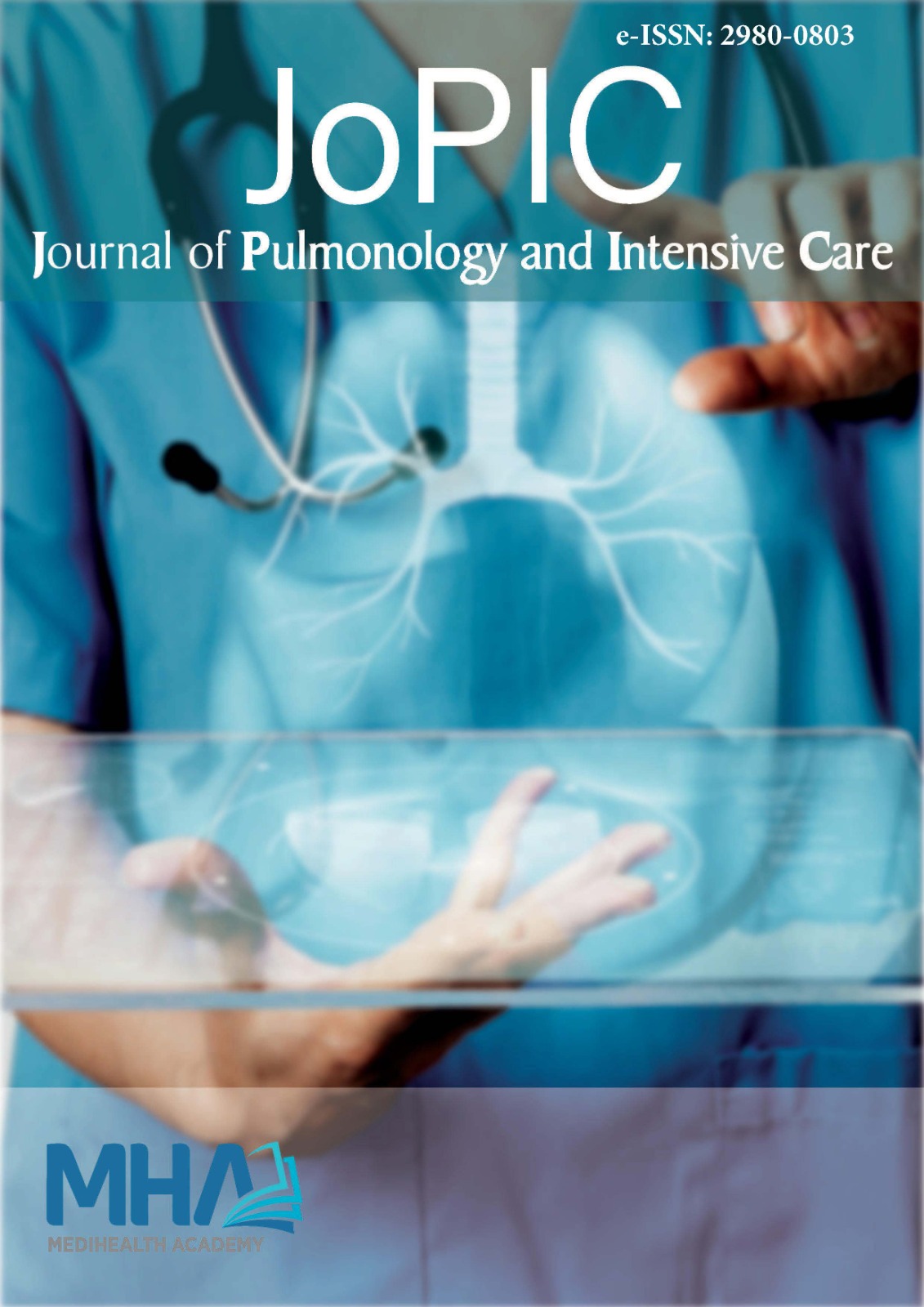1. Lin SH, He YP, Lian JJ, Chu CK. Procalcitonin kinetics to guidesequential invasive-noninvasive mechanical ventilation weaning inpatients with acute exacerbation of chronic obstructive pulmonarydisease and respiratory failure: procalcitonin’s adjunct role. Libyan JMed. 2021;16(1):1961382.
2. Chawla R, Dixit SB, Zirpe KG, et al. ISCCM guidelines for the use ofnon-invasive ventilation in acute respiratory failure in adult ICUs.Indian J Crit Care Med. 2020;24(Suppl 1):S61-S81.
3. Paone G, Conti V, Biondi-Zoccai G, et al. Long-term home noninvasivemechanical ventilation increases systemic inflammatory response inchronic obstructive pulmonary disease: a prospective observationalstudy. Mediators Inflamm. 2014;2014:503145.
4. Çiledağ A, Kaya A, Diken ÖE, Önen ZP, Şen E, Demir N. The riskfactors for late failure of non-invasive mechanical ventilation in acutehypercapnic respiratory failure. Tuber Toraks. 2014;62(3):177-182.
5. Wang J, Shang H, Yang X, Guo S, Cui Z. Procalcitonin, C-reactiveprotein, PaCO2, and noninvasive mechanical ventilation failurein chronic obstructive pulmonary disease exacerbation. Medicine.2019;98(17):e15171.
6. Zheng Y, Luo Z, Cao Z. Mean platelet volume is useful for predictingweaning failure: a retrospective, observational study. BMC Anesthesiol.2022;22(1):160.
7. Han YQ, Zhang L, Yan L, et al. Red blood cell distribution widthpredicts long-term out-comes in sepsis patients admitted to theintensive care unit. Clin Chim Acta. 2018;487:112-116.
8. Kelly AM, McAlpine R, Kyle E. Venous pH can safely replace arterialpH in the initial evaluation of patients in the emergency department.Emerg Med J. 2001;18(5):340-342.
9. Ak A, Ogun CO, Bayir A, Kayis SA, Koylu R. Prediction of arterialblood gas values from venous blood gas values in patients with acuteexacerbation of chronic obstructive pulmonary disease. Tohoku J ExpMed. 2006;210(4):285-290.
10. Falcão ALE, Barros AGA, Bezerra AAM, et al. The prognostic accuracyevaluation of SAPS 3, SOFA and APACHE II scores for mortalityprediction in the surgical ICU: an external validation study anddecision-making analysis. Ann Intensive Care. 2019;9(1):18.
11. Rochwerg B, Brochard L, Elliott MW, et al. Official ERS/ATS clinicalpractice guidelines: noninvasive ventilation for acute respiratoryfailure. Eur Respir J. 2017;50(2):1602426.
12. Carvalho EB, Leite TRS, Sacramento RFM, et al. Rationale andlimitations of the SpO2/FiO2 as a possible substitute for PaO2/FiO2in different preclinical and clinical scenarios. Rev Bras Ter Intensiva.2022;34(1):185-196.
13. Spada C, Gandhi R, Patel SR, Nuccio P, Weinhouse GL, Lee PS. Oxygensaturation/fraction of inspired oxygen ratio is a simple predictor ofnoninvasive positive pressure ventilation failure in critically ill patients.J Crit Care. 2011;26(5):510-516.
14. Adams JY, Rogers AJ, Schuler A, et al. Association between peripheralblood oxygen saturation (SpO2)/fraction of inspired oxygen (FiO2)ratio time at risk and hospital mortality in mechanically ventilatedpatients. Perm J. 2020;24:19.113.
15. Martín-Rodríguez F,López-Izquierdo R,del Pozo Vegas C, et al.Association of prehospital oxygen saturation to inspired oxygen ratiowith 1-, 2-, and 7-day mortality.JAMA Netw Open.2021;4(4):e215700.
16. Wang J, Bian S, Tang X, Ye S, Meng S, Lei W. Influencing factorsof noninvasive positive pressure ventilation in the treatment ofrespiratory failure: a 10-year study in one single center. Eur J Med Res.2021;26(1):136.
17. Ling M, Huiyin L, Shanglin C, et al. Relationship between humanserum albumin and in-hospital mortality in critical care patients withchronic obstructive pulmonary disease. Front Med. 2023;10:1109910.
18. Chen C, Chen Y, Lu C, et al. Severe hypoalbuminemia is a strongindependent risk factor for acute respiratory failure in COPD: anationwide cohort study. Int J Chronic Obstr. 2015;10:1147-1154.
19. Daubin C, Parienti JJ, Vabret A, et al. Procalcitonin levels in acuteexacerbations of COPD admitted in ICU: a prospective cohort study.BMC Infect Dis. 2008;8:145.
20. Rammaert B, Verdier N, Cavestri B, et al. Procalcitonşn as a prognosticfactor in severe acute exacerbation of chronic obstructive pulmonarydisease. Respirology. 2009;14(7):969-974.
21. Bhattacharya B, Prashant A, Vishwanath P, Suma MN, Nataraj B.Prediction of outcome and prognosis of patients on mechanicalventilation using body mass index, SOFA score, C-reactive protein, andserum albumin. Indian J Crit Care Med. 2011;15(2):82-87.
22. Leuzzi G, Galeone C, Taverna F, Suatoni P, Morelli D, Pastorino U.C-reactive protein level predicts mortality in COPD: a systematicreview and meta-analysis. Eur Respir Rev. 2017;26(143):160070.
23. Chen J, Li Y, Zeng Y, Tian Y, Wen Y, Wang Z. High mean plateletvolume associates with in-hospital mortality in severe pneumoniapatients. Mediators Inflamm. 2020;2020:8720535.
24. Kim CH, Park JT, Kim EJ, et al. An increase in red blood celldistribution width from baseline predicts mortality in patients severepatients with severe sepsis or septic shock. Crit Care. 2013;17(6):R282.
25. Farghly S, Abd-Elkader R, El Zohne RA, Abd El-Kareem DM. Meanplatelet volume change (?MPV) and red blood cell distribution width(RDW) as promising markers of community-acquired pneumonia(CAP) outcome. Egypt J Bronchol. 2020;14(1):23.

